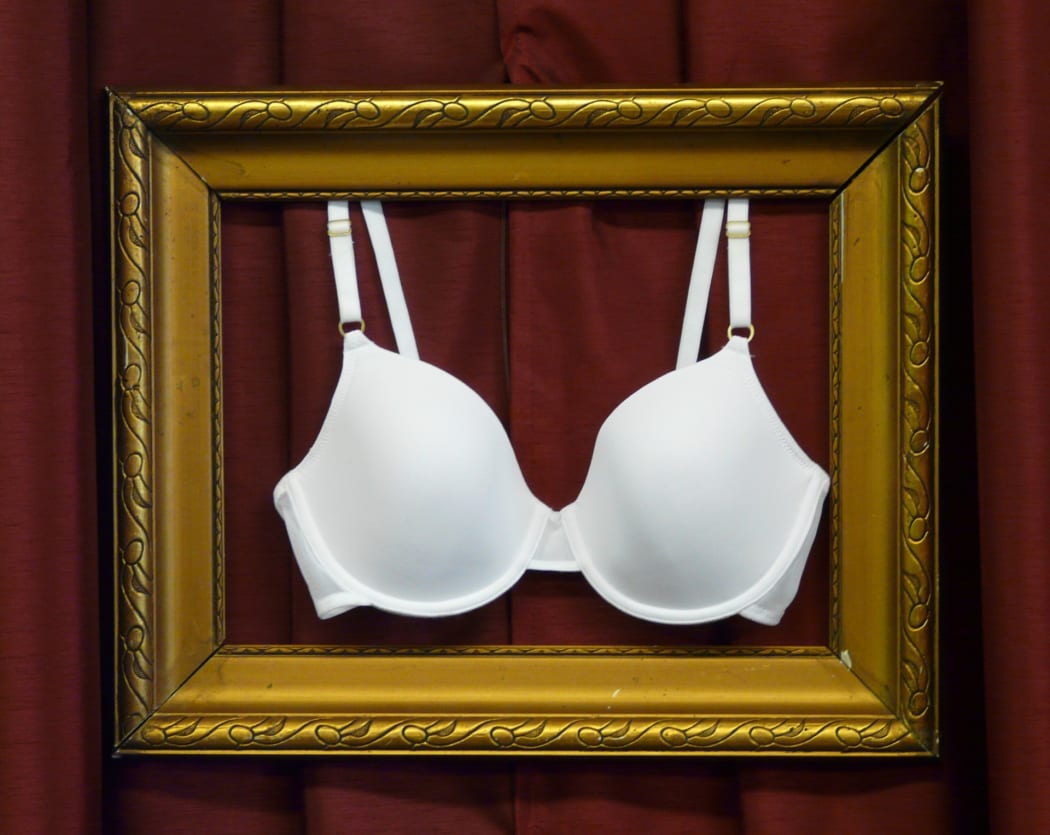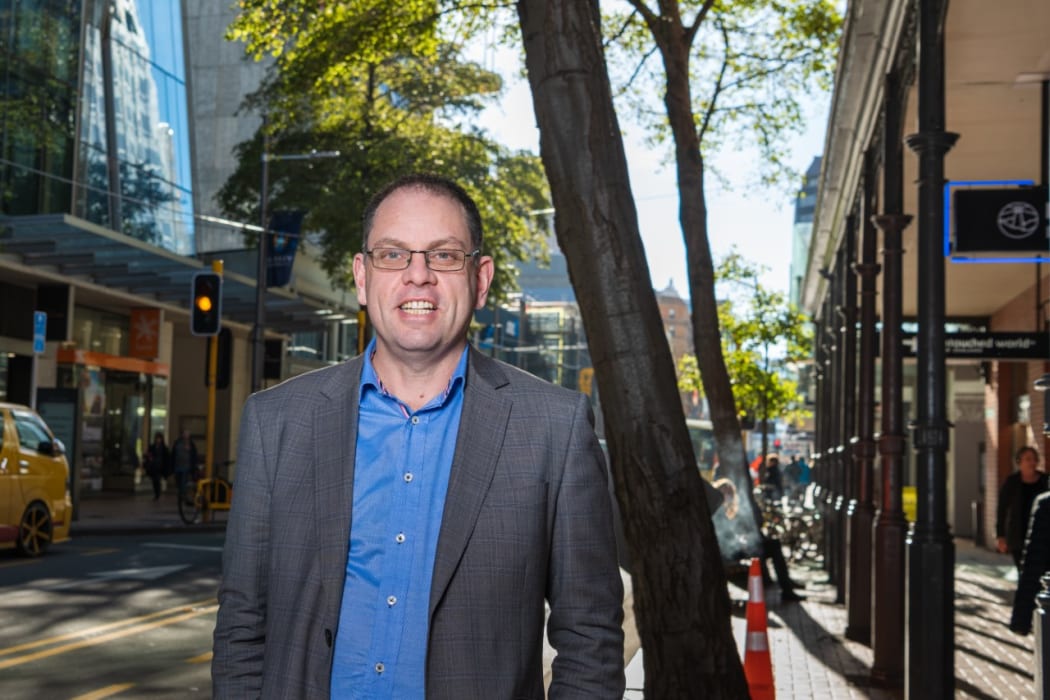Next time you’re in the market for a new bra, would you consider going online for a virtual fitting? Because that’s what’s on offer at Big Girls Don’t Cry Anymore, a lingerie company based in Brisbane.
The company’s founder, Karen Edbrooke said the service is just like having a real life fitting.
“You can FaceTime or Skype in, you set up an appointment online… the girls will call you and discuss what you’re looking for and then they will set up a time when you can Skype or FaceTime into one of our fitting rooms.”
The internet has changed almost every aspect of our lives, from banking to dating… and now shopping for a perfectly fitting bra.
Subscribe to Two Cents' Worth for free on Apple Podcasts, Spotify, Stitcher, RadioPublic or wherever you listen to your podcasts

Bra Photo: Public Domain Pictures
Greg Herford from Retail NZ said that online shopping is growing and growing fast.
“About 9% of all retail spending is done online but that varies a lot depending on the sector you’re talking about. If you’re talking about sporting goods or perhaps clothing, up to 30% of shopping is now done online.”
It’s fast, it’s easy, it’s convenient, and it’s often where the best bargains are to be found.
But shopping isn’t all about buying cheap stuff. Dr Megan Phillips is a lecturer based in AUT’s marketing department and she’s interested in the psychological experience that shopping offers.

Dr Megan Phillips Photo: Supplied
“Humans being social beings, one of the innate things that we need is to connect with others, so being able to go into a physical store and have a connection either the person we’re shopping with, or other consumers in the shopping environment or with the staff this really meets our needs of wanting to connect with others,” said Phillips.
A quick on-the-ground survey of shoppers heading to Auckland’s brand new Newmarket Westfield Mall told me they were there to have fun, catch up with friends and to experience an environment unlike anywhere else.
They were there for connection, interaction and an experience - not just to buy stuff.
So what if the shops aren’t there? What does that mean for a city?
Scott O’Donnell is the chairman of HWCP, a group working on a 170 million dollar development to revitalise Invercargill’s CBD. He says that the state of a city's shopping centre reflects the state of a city.
“The key thing for Invercargill is that the CBD had died," said O'Donnell, "The buildings had been under-maintained, they were falling over, they were leaking and that meant that the quality of the tenants tended to decrease, so they moved away or closed up totally, and as soon as you have a dead CBD the whole town starts to fail.”
A dead CBD, a failing town, a grim prognosis.

Photo: Supplied
Can redeveloping the shopping district really be the answer to Invercargill’s woes? O’Donnell thinks it might be.
“Well it gives the town a centre again, and also it gives people a very comfortable place to meet, greet, eat,
shop, socialise… it’s really about interactions,” he said.
And it’s bigger than just providing a social space for the town, O’Donnell hopes that the re-development will help solve some of the bigger economic challenges in the region.
“Southland’s biggest challenge is we've probably got more employment than we have people to go and do the jobs, so we need to have a vibrant city centre so that people are comfortable to actually move to Invercargill to do the jobs that are left vacant.”
O’Donnell has three grown children himself, and he hopes that by injecting some life into Invercargill’s city centre with the new shopping complex, he can entice them and others of their generation to return to the city once they’ve completed their education.
A lively shopping district could be one way to make a place more appealing, to keep its residents and to persuade its young people to come back. And O’Donnell even goes as far as saying that shopping isn’t the important bit of the shopping district, but it’s second to the entertainment and culinary experiences on offer.

The HWCP vision for Invercargill Photo: Supplied
He might be onto something, Megan Phillips says that 78% of millennials prefer to spend their money on experiences over material goods, so it’s a good idea for commercial spaces to offer a way for people to relax and experience the company of friends.
Greg Harford believes that the increase in online shopping has actually spurred along physical shops to provide experiences that can’t be had online.
“The bricks and mortar experience is evolving and adapting to take account of changing customer demands and the rise of online shopping… physical stores are becoming much more experiential.”
Phillips agrees, “people no longer want to go to a shop and look through the shelves, you can do that online, so there needs to be another reason why someone would go to the store.”
She says that retailers need to innovate or be left behind.
So what kind of experiences are retailers offering customers within their physical stores? Phillips has been travelling all over the world to find out. She cites retail experiences from in-store yoga at Chicago’s Lululemon to cocktail making classes in liquor stores.
So, to the question of whether the internet could eventually spell the end of bricks and mortar shops. The answer, it seems, is “no.” In fact, the internet might actually be having the opposite effect, pushing physical shops to successfully re-invent themselves as experiences.
And far from reducing on-site sales, Karen Edbrooke, says that online technologies have actually helped boost foot traffic to the Brisbane store of Big Girls Don’t Cry Anymore. Edbrooke has found an innovative way to promote the business through BG_TV, a series of informational segments and fashion shows live-streamed across social media platforms. The staff of the shop model the latest stock and viewers and potential customers tune in to enjoy the shows, learn about the products and even ask questions. No sales are made directly through this online content, but interested viewers are directed to the store, either online or in store. Edbrooke says that in the past six months of live streaming this content, they’ve seen a huge increase in the numbers of people making dedicated trips to get properly fitted in the Brisbane store. Even Kiwis are making the journey over there, having enjoyed the online content put out by Big Girls Don’t Cry Anymore.
Phillips said that this kind of approach is part of a bigger trend in retail, where companies want to educate, empower and engage potential customers rather than pushing products in their face.
But there are some types of engagement that can only be achieved in the flesh. Phillips said that the research shows that when it comes to buying physical objects, consumers want to touch and feel before they buy.
Shoppers in the Newmarket mall agreed that trying things on and sussing out the quality made shopping in real life preferable to online browsing.
So back to the question at the heart of all this… where is the future of retail - online or in store?

Retail NZ's Greg Harford Photo: Supplied
Greg Harford said bricks and mortar shops are here to stay.
“Customers want to be able to shop both online and instore,” he said.
Phillips agrees. “It’s not all about the physical and it’s not all about the online,” she said. Consumers use the internet to get information and inspiration, they want to visit the physical store to experience the products and they buy instore or online.
And what does Edbrooke think? Now she’s all set up with online fittings, live streamed fashion shows and informational segments - would she ever consider shifting her business to an online model?
“A bricks and mortar store? You have to have it.”
She doesn’t think that the online technologies available will ever replace the real life experience of shopping, but they can complement and enhance it.
Online and instore retail services compliment one another. Online tools can be used to engage with customers and lure them into store, and amazing on site experiences can persuade shoppers to buy products. There will always be a desire to try things on, to feel fabrics and to engage in the social act of shopping - and so it seems likely that bricks and mortar shops are here to stay. A busy high street, a bustling mall and a thriving CBD can give a city the vibe it needs to attract residents and workers - re-energising local economies. There’s more to shopping that buying stuff - and in order to satisfy customers, commercial districts are having to offer experiences as well as things. And as technologies evolve, so do retail experiences … both online and in the flesh and it’ll be interesting to see what happens over the next few years.

